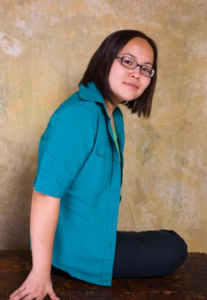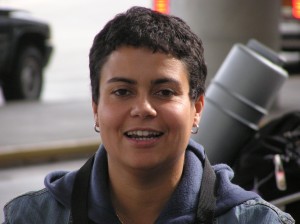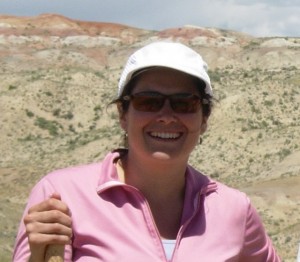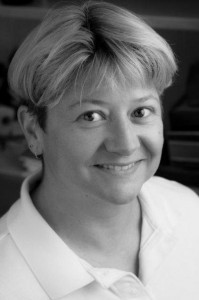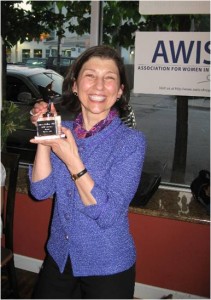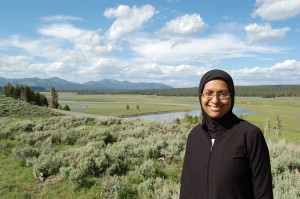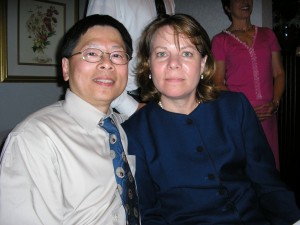Lisa Gilbert-Hill, Illinois State Police, Forensic Scientist
By Heather King
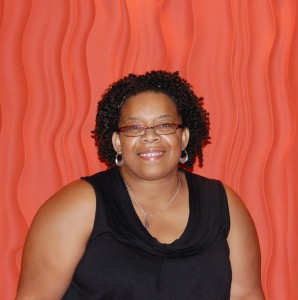 Lisa Gilbert-Hill, a forensic scientist with the Illinois State Police, is always bubbling with positive energy, but becomes noticeably more excited when she talks about her ideas for outreach and education. “I’ve been working on a total immersion science program for youth for a few years with the help of Project Exploration, and I think it’s finally coming together,” she explains, then launches into a description. The program would include everything needed to allow high school students to get a taste of what it would really be like to be a forensic scientist (in real life, not on TV), including training, a crime scene, the use of a laboratory, help from lawyers and other scientists, and a real courtroom for them to testify in. “They would actually be able to walk in our shoes and learn what it is really like to be us!” Hearing not only how fun, but educational and beneficial this would be to the students, I am ready to enroll in high school again just so I can sign up. This is just one of the many things Lisa excels at- inspiring people and getting them excited to help others.
Lisa Gilbert-Hill, a forensic scientist with the Illinois State Police, is always bubbling with positive energy, but becomes noticeably more excited when she talks about her ideas for outreach and education. “I’ve been working on a total immersion science program for youth for a few years with the help of Project Exploration, and I think it’s finally coming together,” she explains, then launches into a description. The program would include everything needed to allow high school students to get a taste of what it would really be like to be a forensic scientist (in real life, not on TV), including training, a crime scene, the use of a laboratory, help from lawyers and other scientists, and a real courtroom for them to testify in. “They would actually be able to walk in our shoes and learn what it is really like to be us!” Hearing not only how fun, but educational and beneficial this would be to the students, I am ready to enroll in high school again just so I can sign up. This is just one of the many things Lisa excels at- inspiring people and getting them excited to help others.
Lisa grew up in Chicago’s South Shore neighborhood, where she became interested in science at a very young age. “My mother likes to tell the story that I had two crushes when I was little – one was Tom Jones and the other was Jacques Cousteau. My first professional claim was that I wanted to be an oceanographer, because I would sneak out and watch Jacques Cousteau on TV after I was supposed to be asleep, and my mother had to follow me to see what I was doing before she figured out why I kept talking about oceanography!” This early interest was the foundation for a life-long passion for science, which led Lisa to major in biology and dabble in pharmacy courses at Xavier University of Louisiana. Lisa finished her bachelor’s degree in biology at Governors State University in University Park, Illinois, in Chicago’s south suburbs. With advice from her advisors at Governors State, Lisa decided to pursue a Master’s degree in Analytical Chemistry. Her master’s project with Dr. Karen D’Arcy focused on chelating agents used to remove contaminants from well water.
Lisa was presented with an unexpected opportunity when Mary McCarthy of the Illinois State Police came to Governors State to recruit graduate students for employment as forensic scientists. Until that time in the early 1990s, the city of Chicago performed its own forensic investigations, but due to political tensions between Chicago Mayor Richard M. Daley and Illinois Governor Jim Edgar, forensic investigations was to be run by the Illinois State Police starting at that time. A new, state of the art forensics laboratory was being built in Chicago, and the center would be filled with the choicest scientists from around the country. Mary encouraged Lisa to apply, and after a year-long process, Lisa was hired as part of the first team of 85 scientists responsible for forensics in the Chicago area under the new system.
“Real life as a forensic scientist is very different from what you see on TV,” Lisa tells me. I ask her how she became involved in outreach, and she tells me a story from a few years ago in which she was testifying about a case in court. “I was addressing the jury, as is protocol when testifying, when I realized that one of the jurors was actually shaking her head at me while I was speaking, as if she disagreed with my testimony.” Lisa recalls that this was during a time in which the ‘CSI effect’ was in full force, and her experiences showed her that people often confused what they saw on television with the reality of her occupation. “I was so bothered by her head shaking that I stopped my testimony and told the judge that one of the jurors seemed to disagree with me, and he called a recess. When we came back, the head shaking had stopped.” But Lisa didn’t forget this, and the experience fueled her involvement in education and outreach. “I see outreach as a chance to inform the public,” Lisa says.
Lisa had previously spoken with students through requests that came in to her department, but branched out after meeting Jameela Jafri (see AWIS scientist of the month September 2010) at the Museum of Science and Industry in Chicago. Jameela asked Lisa to do an experiment with some students through Project Exploration’s (PE) Sisters4Science program in 2007, and Lisa has been involved ever since. “I love PE’s mission and work, and it’s so important to help expose youth to what’s out there, and to let them know that someone other than their family cares about them, and is cheering for them to succeed. In some ways, I think this makes the child feel as though they are accountable, that someone is paying attention to what they’re doing and wants them to do well.” Lisa knows how important it is to be exposed to new ideas and how this exposure can lead to important opportunities. “I don’t think I really knew what forensics were until I applied for my job!” she tells me candidly.
In 2009, Lisa joined PE’s board of directors, giving her even more opportunities to help the community and inspire young people to become interested in science. She hopes that her ‘total immersion’ forensic science program will be launched soon, potentially this summer. We wish Lisa luck in this and all future endeavors.
Nomination and article submitted by AWIS Chicago Staff Writer Heather King. Ms. King is a PhD candidate at the University of Chicago.
Know a scientist you think should be featured in an upcoming “Scientist of the Month” article? Send nominations to communications@awis-chicago.org. Your nominee does not need to be an AWIS member or a woman, but should promote the advancement of women in science, technology, mathematics and engineering.
Want to keep yourself up-to-date on AWIS Chicago activities? Follow AWIS Chicago on Twitter! You can request to be added to our listserve by clicking here, and join the AWIS Chicago group on LinkedIn and Facebook by clicking the icons on the bottom right of this page.

